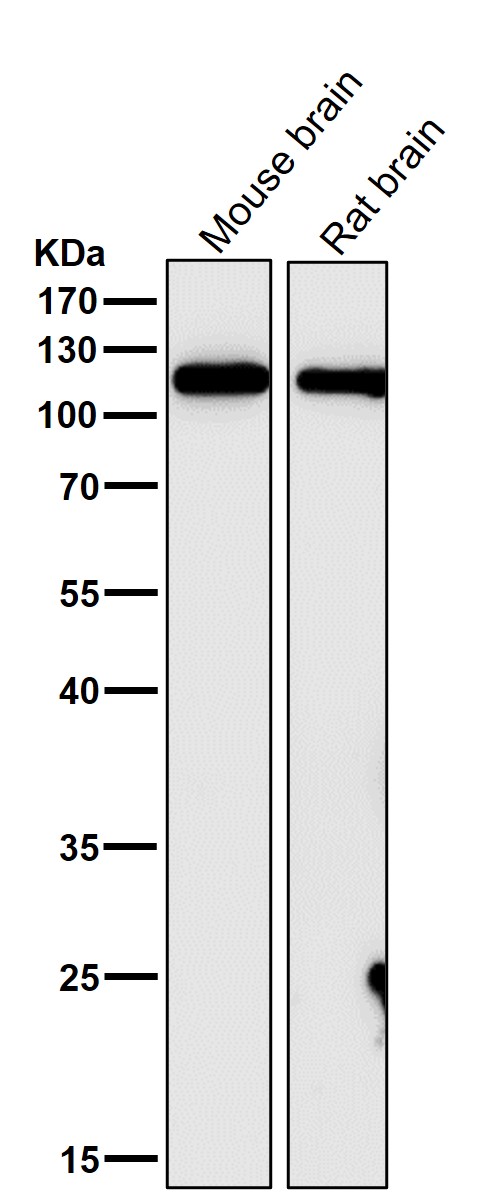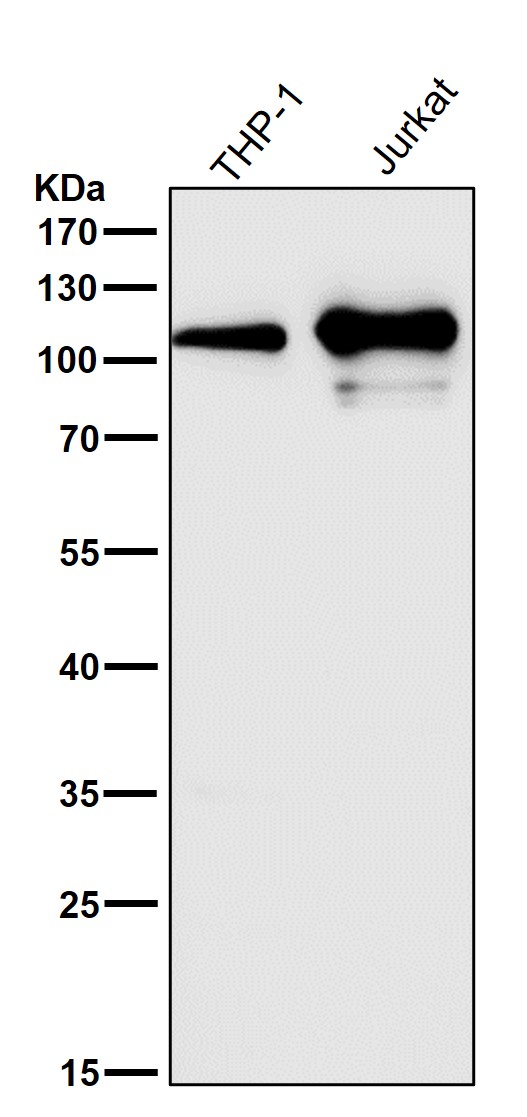


| WB | 1/1000-1/2000 | Human,Mouse,Rat |
| IF | 咨询技术 | Human,Mouse,Rat |
| IHC | 咨询技术 | Human,Mouse,Rat |
| ICC | 1/50-1/200 | Human,Mouse,Rat |
| FCM | 1/20-1/100 | Human,Mouse,Rat |
| Elisa | 咨询技术 | Human,Mouse,Rat |
| Aliases | ARHG2; ARHGEF2; GEF; GEFH1; Lbcl1; Lfc; LFP40;;GEF H1 |
| WB Predicted band size | 112 kDa |
| Host/Isotype | Rabbit IgG |
| Antibody Type | Primary antibody |
| Storage | Store at 4°C short term. Aliquot and store at -20°C long term. Avoid freeze/thaw cycles. |
| Species Reactivity | Human,Mouse,Rat |
| Immunogen | A synthesized peptide derived from human GEF H1 |
| Formulation | Purified antibody in PBS with 0.05% sodium azide,0.05% BSA and 50% glycerol. |
+ +
以下是3篇与GEFH1抗体相关的参考文献,按领域分类简要概括:
1. **文献名称**:*GEF-H1 mediates tumor necrosis factor-α-induced Rho signaling and myosin light chain phosphorylation in endothelial cells*
**作者**:Birukova AA 等(2006)
**摘要**:研究GEF-H1在炎症因子TNF-α诱导的内皮细胞屏障功能调控中的作用,通过Western Blot和免疫沉淀实验使用GEFH1抗体,证明其介导RhoA激活和细胞骨架重构。
2. **文献名称**:*The microtubule-associated Rho activating factor GEF-H1 interacts with exocyst complex to regulate vesicle traffic*
**作者**:Pathak R 等(2012)
**摘要**:利用GEFH1特异性抗体进行免疫荧光共定位实验,揭示GEF-H1通过结合exocyst复合体调控囊泡运输,影响细胞极化与分泌过程。
3. **文献名称**:*ARHGEF2 (GEF-H1) knockdown suppresses glioma progression by regulating RhoA/ROCK2 pathway*
**作者**:Li X 等(2020)
**摘要**:通过shRNA敲低GEFH1并结合抗体检测蛋白表达,证明其在胶质瘤中通过RhoA/ROCK2通路促进肿瘤侵袭,为靶向治疗提供依据。
*注:若需补充更多文献或实验细节(如抗体货号/应用场景),可提供进一步信息。*
The GEFH1 antibody targets the Guanine Nucleotide Exchange Factor H1 (GEFH1), also known as ARHGEF2. a protein belonging to the RhoGEF family. GEFH1 regulates Rho GTPases, particularly RhoA and Cdc42. by catalyzing the exchange of GDP for GTP, thereby activating downstream signaling pathways involved in cytoskeletal reorganization, cell migration, and neuronal development. It is highly expressed in the brain, where it influences microtubule dynamics, dendritic spine formation, and synaptic plasticity. Dysregulation of GEFH1 has been linked to neurological disorders, including epilepsy, autism spectrum disorders, and neurodegenerative conditions, as well as cancer progression due to its role in cell cycle control and invasion.
GEFH1 antibodies are widely used in research to detect endogenous GEFH1 protein levels via techniques like Western blotting, immunohistochemistry, and immunofluorescence. These tools help elucidate GEFH1’s spatial-temporal expression, interaction partners, and post-translational modifications. Commercial GEFH1 antibodies are typically raised in rabbits or mice, with validation across multiple applications and species specificity (human, mouse, rat). Researchers rely on these antibodies to explore GEFH1’s dual roles in neurodevelopment and disease pathogenesis, particularly its interplay with microtubule-associated proteins and its potential as a therapeutic target. Proper validation, including knockout controls, is critical due to occasional cross-reactivity with related GEF family members.
×